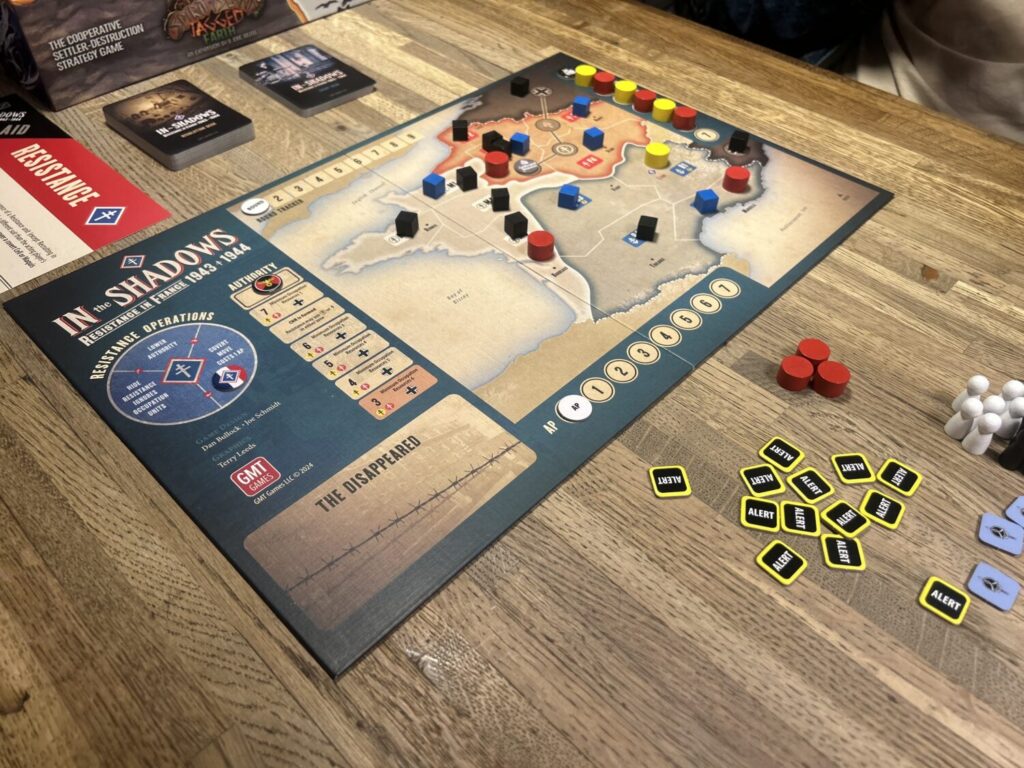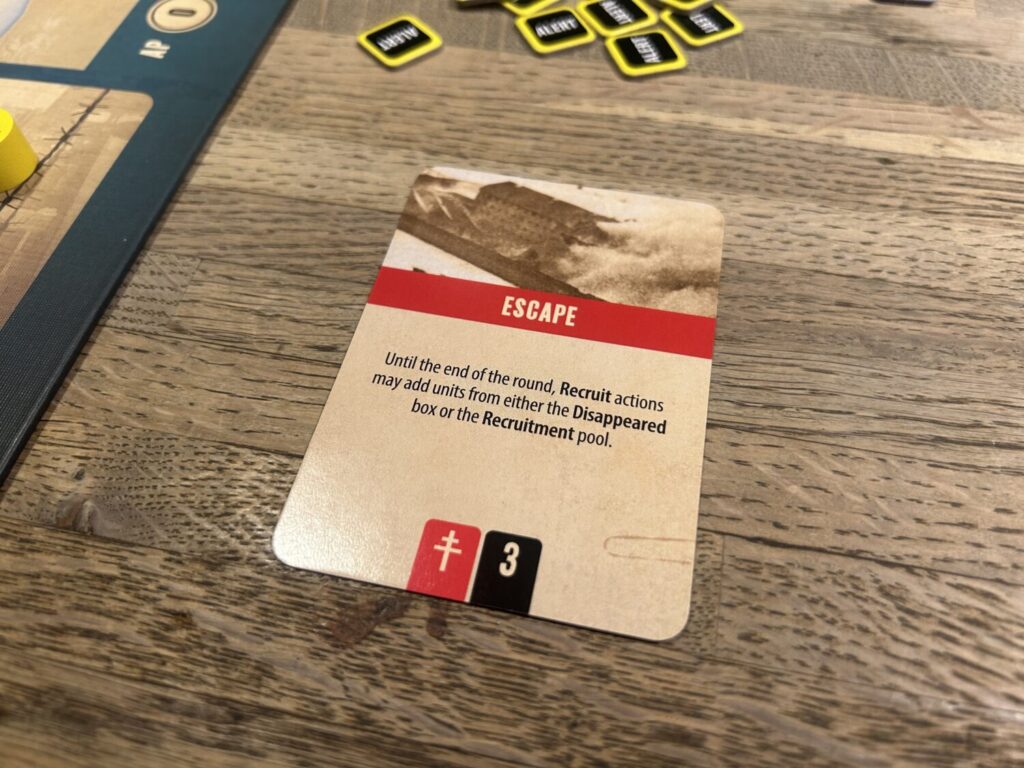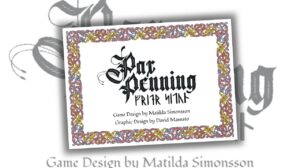Disclosure: Meeple Mountain received a free copy of this product in exchange for an honest, unbiased review. This review is not intended to be an endorsement.
I have come to terms with the fact that I am an abysmal COIN player. No matter how much I play any designs in the series, I never develop a sense of the shape of the thing. I don’t have the type of imagination necessary to see the larger picture, assuming “imagination” is the issue. I don’t really understand how my actions now will impact the choices available to me later. All of my decisions are made in and for the moment. It’s an odd feeling.
COIN, an abbreviation for Counter-Insurgency, is a vaunted asymmetric series from publisher GMT in which players take on roles from real-life asymmetric conflicts. Many of the games pit rebel/resistance—a distinction often in the eye of the beholder—fighters against an established governing force, often one whose legitimacy is questionable. The specifics of COIN change from game to game. The series is united by the core system, which is beautifully simple despite all the thorny particulars that pop up from title to title: Reveal a card, then choose what type of action to take on your turn, which will impact where in the turn order you sit for the next round.
In the Shadows: Resistance in France 1943-1944 is not, for all that preamble, a COIN game. It uses a Card-Driven system similar to Twilight Struggle. But the feel of the thing is COIN-coded. It seems to me that designers Daniel Bullock and Joe Schmidt are drinking from the same well, and I have the same issues with it as a player. I almost never really know what’s going on in the big picture.
 I know what you’re trying to do. The Germans want to arrest members of the Resistance while getting supplies back to der Heimat. The French are trying to ambush and sabotage. It’s all managed via cards, and I do very much like the way In the Shadows uses its cards. Like many CDGs, each card has an event and some quantity of action points. Where In the Shadows breaks from the pack is that each card is also suited to match one of the three French regions. You can use action points to perform an action anywhere on the board, but they’re cheaper if you stick to the region that matches the suit of the current card. This not only helps to keep the entire board active, it also forces players to prioritize in a meaningful way.
I know what you’re trying to do. The Germans want to arrest members of the Resistance while getting supplies back to der Heimat. The French are trying to ambush and sabotage. It’s all managed via cards, and I do very much like the way In the Shadows uses its cards. Like many CDGs, each card has an event and some quantity of action points. Where In the Shadows breaks from the pack is that each card is also suited to match one of the three French regions. You can use action points to perform an action anywhere on the board, but they’re cheaper if you stick to the region that matches the suit of the current card. This not only helps to keep the entire board active, it also forces players to prioritize in a meaningful way.
What I don’t love is the resolution deck. Any time an action is performed, the active player draws the top card from the resolution deck. Each card in that deck is divided into five sections, one for each of the game’s basic actions. The action you’re performing resolves per the instructions on the drawn card. The upside of this system? It allows for a lot more narrative within the results. An attempted Ambush could result in a German soldier getting removed from the board as intended, or it could go wrong, and a French unit blows its cover. The success of your Arrest action may hinge on whether it’s Nazi soldiers or French collaborators executing the order. I love the idea, but the failure rate is brutal. I can tell you that, as the Resistance, drawing failure after failure starts to feel bad. Thematic, maybe, but also bad.

I owe it to GMT to praise the rulebook. I have spent too much time grousing about their impenetrable tomes in the past to not shout out getting it right. In the Shadows has a terrific, approachable, and digestible rulebook, one that makes it easy to get started. The lightness of the design helps, there’s no question about that, but this is a real step forward. I hope this is a harbinger of things to come.
My time with In the Shadows has led me to another possible explanation for my issue with the COIN games. I more readily identify with the scrappier roles, the underdogs and insurgents, but I’m not smart enough to do what they do. Being an insurgent is hard. Going against the grain, fighting the power, that’s difficult. It is much easier for an extant system to perpetuate itself, as we have seen time and time again. In the Shadows models that well. If the French player isn’t doing a good job, the Nazis have an easy go of it. Move the trains, deliver the supplies, do it again. There’s probably a lesson in there.










